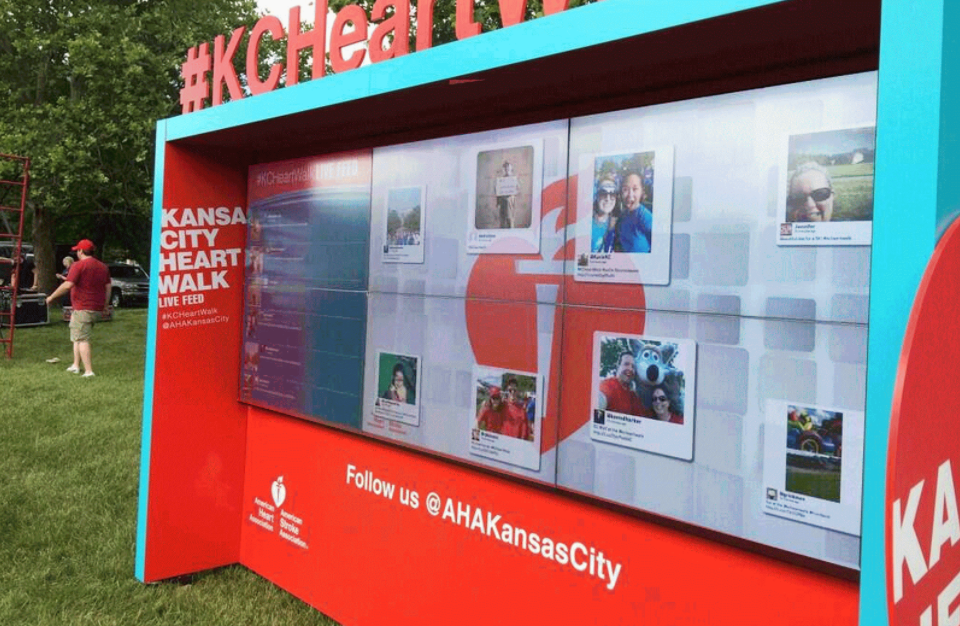Apple is one of the most recognizable brands in the world. That shiny, half-eaten apple is known across the globe for its innovative marketing campaigns, its state-of-the-art products, and its cult-like following.
So just how did Apple manage to get such a loyal user base?
Let’s take it back to basics. In order to build a loyal following in this day and age, brands need to be authentic – that’s what consumers today react to. They buy from businesses they trust and businesses that share the same morals as them, which is exactly the concept Apple has tapped into.
Sure, their products may not be much better than their Android counterparts (if at all), but they’ve managed to create a sense of belonging to them that generates the idea of community.
And they do this by implementing campaigns with User Generated Content (UGC).
Basically, they pull together content that their users have created to provide authentic and real-life campaigns. This makes them stand out against other technology brands that are using polished marketing messages to reach their fans (something consumers today are becoming more and more savvy to).

Consumers trust UGC more than traditional media. Image source.
Apple has made a point to channel innovativity into all of their marketing campaigns.
Take the 50 Storeys High UGC campaign, as an example. Instead of focusing their marketing efforts around sleek product shots, Apple took a different path and centered their campaign for the iPhone 6 around the user experience by display the work of 77 iPhone photographers from around the world in 24 different countries.

Apple’s 50 Storeys campaign for the iPhone 6. Image source.
The works appeared on huge billboards in cities like Dubai, London, and Paris, and gave potential iPhone customers the chance to see what real people managed to do with their devices.
Fast forward to the release of the iPhone 7, and Apple seems to have stepped it up a notch, adding an even more creative element to their UGC marketing campaign.
Introducing the “Shot on iPhone 7” Campaign
The latest UGC campaign from Apple saw commissioned pro and amateur photographers to take low-light photos with their iPhones.
After hearing back user feedback about the camera on the previous model, where it struggled to take nice shots in the dark, Apple wanted to address the fact that the iPhone 7 was much better at handling low-light photography.
https://www.youtube.com/watch?v=0QKG4mRH_MY
So, they asked photographers around the world to help get that point across.
In November 2016, the photographers took nighttime photos in places like Arctic caves, volcanoes in Java, and nightclubs in Johannesburg to capture the full extent of the new iPhone camera.
The shots are now being shown around the world.
Okay, great. Apple got its users to demonstrate the power of the iPhone 7 camera instead of crafting a well-polished marketing message that addressed it.
Their customers spoke, and they answered with their customers. But why was it so effective in this instance?
Why Using User Generated Content Worked in This Case
Firstly, iPhone was starting to get a reputation for their sub-par photo limitations. People were beginning to covet other mobile models that took better shots, so it was up to Apple to answer this concern.
But, instead of generating a polished marketing strategy straight from the team at Apple who had one thing in mind (to sell more iPhones), they actively asked their users to take photos to demonstrate the new model’s capabilities.

One of the photos from the campaign, by Arif Jawad. Image source.
This works, because people are more likely to believe other people rather than brands, and are more likely to sit up and listen to what other users are saying.
Taking it even further, Apple handled the biggest objection potential buyers had by offering visual proof. Rather than simply stating that their camera was better this time around, they actively showed that it was better.
UGC is great for showing rather than telling – a key concept in storytelling that helps build a connection. Even if you don’t have the time or resources to create your own visuals, you can draw from your audience via social media to showcase their own videos, photos, and reviews of your product.
This is exactly what Apple did (although I’m sure they had enough time and resources to create a very well polished marketing campaign).
How Brands Can Use UGC Like Apple
So you’ve seen the campaign and you know why UGC worked in this case for Apple, but how can you start using it in your campaigns for your own products?
1. Tackle Potential Objections
Consumers are no longer passive in the buying cycle. They actively seek out the best option for them and will always have objections and questions before they buy.

The best thing businesses can do is handle and answer these objections in a way that satisfies the consumer (and remember, they can see through any veiled attempts to pull the wool over their eyes).
You can use UGC to tackle potential objections customers might have by inviting previous users to participate in a campaign that directly addresses those objections – just like Apple did with their iPhone 7 camera.
2. Involve Your Audience
One of Apple’s biggest successes is creating a rock-solid community around their brand – so much so, that it has been likened to a cult in the past.
The reason Apple has been able to do this is because they actively involve their audience. By generating a campaign that includes them, it doesn’t feel like you’re simply throwing your product at them and asking them to buy.
As humans, we like to feel a part of something, so a UGC campaign is perfect if you want to create a community. By involving your audience, you’re also encouraging them to promote the qualities of your business to others via:
User Reviews
If someone has a good experience with a product and feels like they are supported by the brand, they are more likely to write a great review about it. And, when 77% of people read reviews before they buy, this isn’t a stat you should be ignoring.

People trust online reviews as much as they trust personal recommendations. Image source.
Social Media “Testimonials.”
A UGC campaign almost acts like social media testimonials. If you invite your customers to send in specific images or share a specific experience they had with your product, these are akin to customer testimonials – except they’re more raw and real.
3. Display UGC to Add to the Campaign
Generating content from your audience is only part of the UGC process. When you’re putting together an entire UGC-based campaign, you need to consider how you’re going to share the content at the end.
Take Apple’s iPhone 7 campaign, where they are displaying the final images in 25 countries around the world. The content is being driven forward into another marketing tactic.
To channel this approach, you want to make the content the center of your marketing campaign and build out around it. So, you might ask users to send in pictures of themselves using your product and then display the pictures on a wall at an event or on a designated page on your website.

UGC from the Kansas City Heart Walk was projected onto a big screen at the event so all participants could see what others were saying about it.
UGC has been a vital part of Apple’s marketing strategy for years, which is why it’s reached such a high level of community.
Apple understands that consumers are no longer looking to buy into the whole polished marketing idea, and instead want real-life proof of products before they buy.
Through their “Shot on iPhone” campaigns, Apple has been able to tackle any objections potential buyers might have while showcasing some amazing content that their users have created with the device. This works because potential buyers have their key questions answered in an authentic way and they get to see first-hand what other customers are doing with the device.




